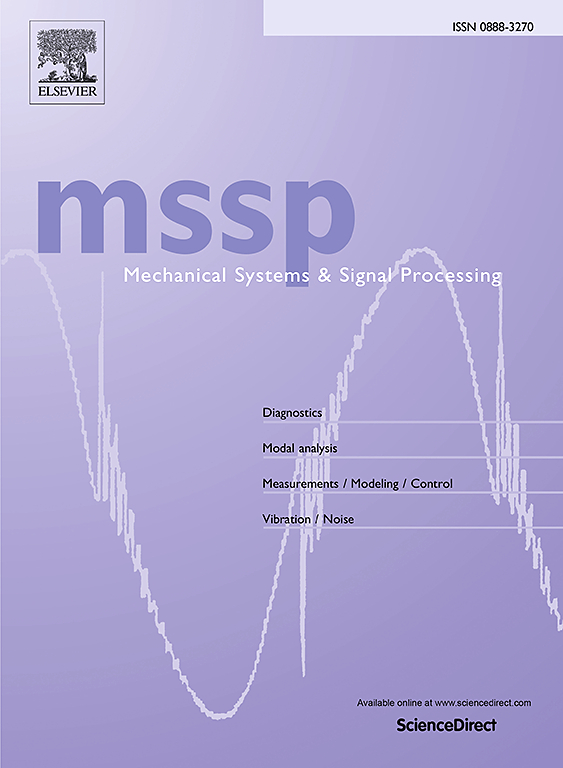Sound absorption estimation using the discrete complex image source method and array processing
IF 7.9
1区 工程技术
Q1 ENGINEERING, MECHANICAL
引用次数: 0
Abstract
Estimating the sound absorption of a material under realistic sound-field incidence conditions relies on accurately describing the measured data. Evidence suggests that modeling the reflection of impinging spherical waves is important, especially for compact measurement systems. This article proposes a method for estimating the sound absorption coefficient of a material sample by mapping the sound pressure, measured by a microphone array, to a distribution of monopoles, including the sound source and a series of complex image-sources. The proposed method is compared to modeling the sound field as a superposition of two sources (a monopole and an image source). The sound absorption measurement is tested with simulations of the sound field above infinite and non-locally reacting porous absorbers. The inverse problem estimations are compared to the classical plane-wave absorption coefficient and the one obtained by measuring the surface impedance when a spherical wave impinges on the absorber. Experimental analysis of two porous samples and one resonant absorber is also carried out in a laboratory. Two microphone arrays were tested with different apertures and number of sensors, and it was demonstrated that measurements are feasible even with the more compact array and for frequencies above 250 [Hz]. The discretization of the integral equation led to a more accurate reconstruction of the sound pressure and particle velocity at the sample’s surface. The resulting absorption coefficient agrees with the one obtained for spherical wave incidence, indicating that including the source and several complex image-sources is an essential feature of the sound field.
求助全文
约1分钟内获得全文
求助全文
来源期刊

Mechanical Systems and Signal Processing
工程技术-工程:机械
CiteScore
14.80
自引率
13.10%
发文量
1183
审稿时长
5.4 months
期刊介绍:
Journal Name: Mechanical Systems and Signal Processing (MSSP)
Interdisciplinary Focus:
Mechanical, Aerospace, and Civil Engineering
Purpose:Reporting scientific advancements of the highest quality
Arising from new techniques in sensing, instrumentation, signal processing, modelling, and control of dynamic systems
 求助内容:
求助内容: 应助结果提醒方式:
应助结果提醒方式:


